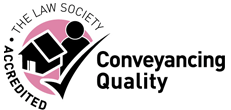Stamp Duty Land Tax
3rd April 2019
This month has seen changes to Stamp Duty Land Tax. Paul Kibbler from the Conveyancing department at Gilbert Stephens Solicitors explains what these changes are and how they might affect you.
Stamp Duty Land Tax needs to be paid on any property or land over a certain price in England and Northern Ireland. The current threshold over which you have to pay is £125,000 for residential properties or £150,000 for non-residential land and properties, though there are exceptions for first time buyers.
As of 1st March 2019, buyers now have only 14 days after the completion date to submit their Stamp Duty Land Tax Return and pay HMRC. Previously, buyers had 30 days. If you are instructing a property solicitor, they will make sure that this is arranged in a timely manner, though it is important to note that the buyer is liable if the tax isn’t paid on time. Therefore, if you are not instructing a solicitor to handle the entire buying process, you need to be aware of your responsibilities.
Specific rules and a surcharge rate applies to properties that are not your main residence and to inherited properties.
If you purchase your new property before you have sold your current main residence, you will still be liable to pay a higher rate as the new property will count as an additional home. However, once you have sold your current home, you can claim the surcharge back provided that this occurs within 3 years.
Stamp Duty Land Tax is also payable in a number of other situations, such as transfer of equity, certain remortgages and to those purchasing a property but who also have one held in trust.
Some rules provide relief from Stamp Duty Land Tax, including in certain cases of inheritance or if the transfer of the property is ordered by the Court in divorce proceedings.
If you have any questions about how Stamp Duty Land Tax can affect you in the purchase or transfer of your property, contact Paul Kibbler on 01392 424242 or email .






